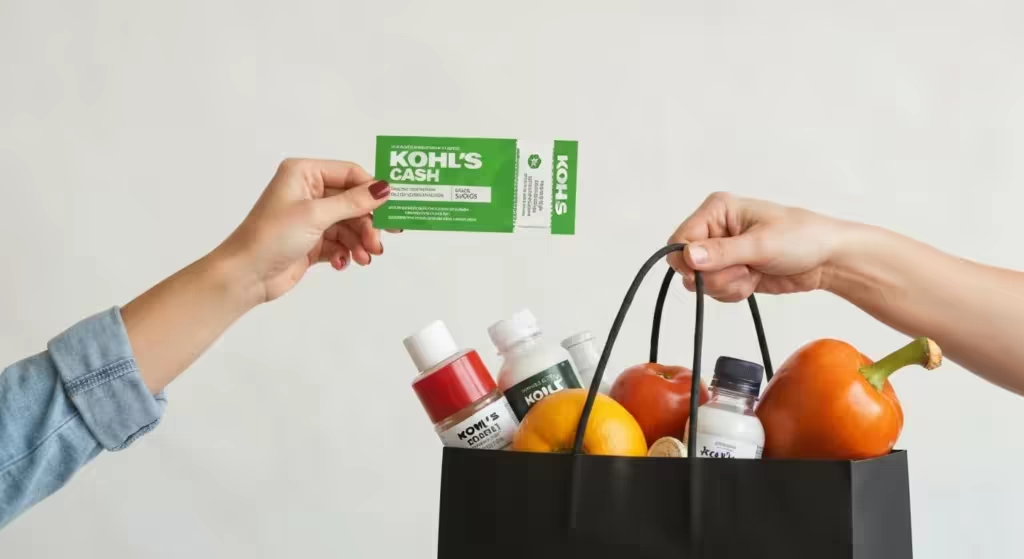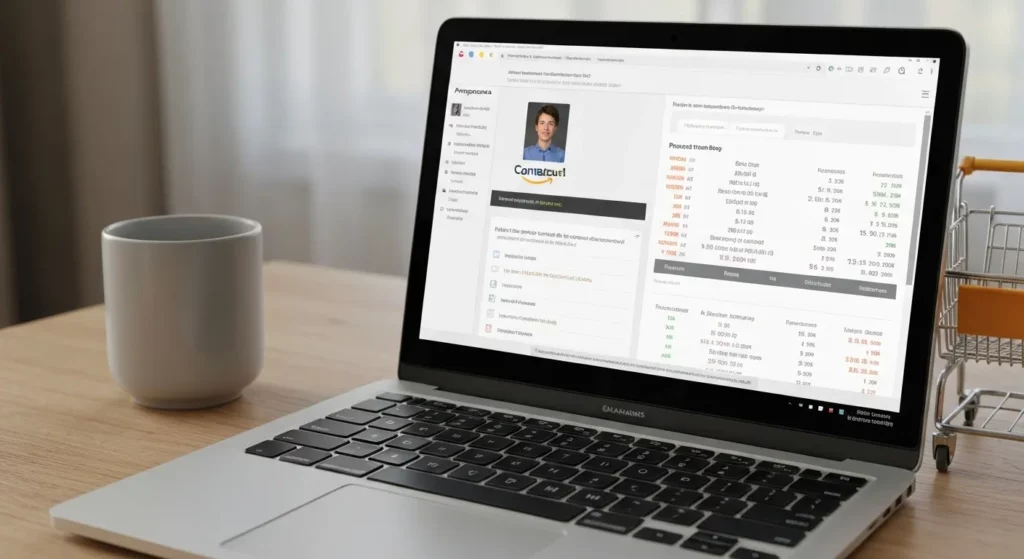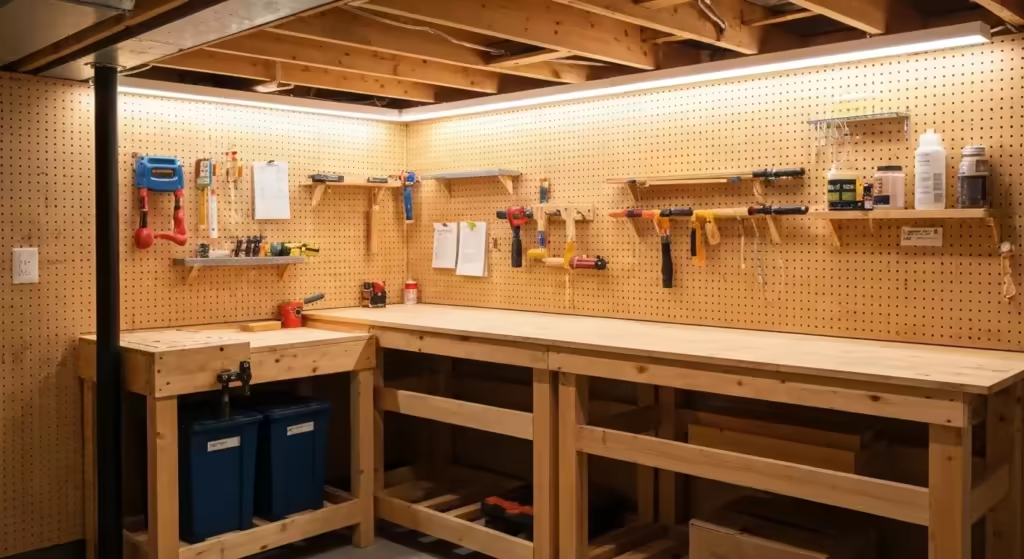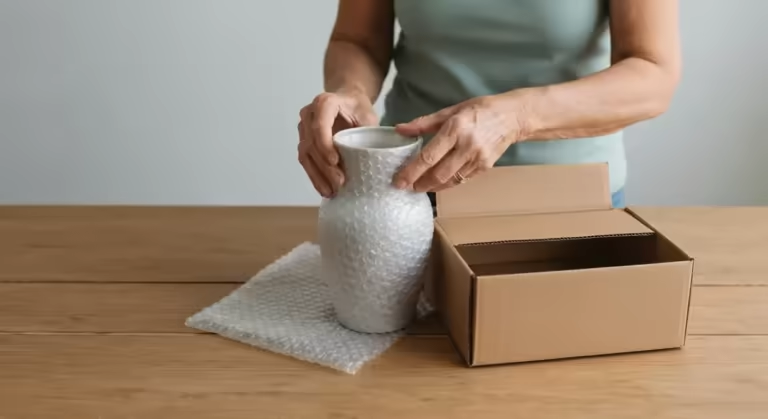It all started with a sound. A quiet, insidious drip… drip… drip… that I first dismissed as a trick of the wind or a branch against the window. But this was a persistent sound, and it had the distinct, hollow echo of water meeting drywall. My stomach sank. At my age, you learn that small, unexpected sounds often lead to large, unexpected bills.
Sure enough, a dark, ugly stain was blooming on the ceiling of our guest bedroom. A quick and very expensive visit from a roofer confirmed my worst fears. A major repair was needed, and my insurance, with its dizzying list of exclusions, was only going to cover a fraction of the cost. I was looking at a five-figure bill that I simply hadn’t budgeted for. The thought of pulling that kind of money from our retirement savings sent a jolt of pure panic through me. That money was for our future, for travel, for peace of mind—not for a new roof.
For a few days, I was adrift in a sea of anxiety. I’d walk around the house, running numbers in my head, feeling a sense of helplessness I hadn’t felt in years. My wife, ever the pragmatist, said, “We’ll figure it out. We always do.” But I needed a plan. I needed to feel like I was taking action, not just waiting for the bill to arrive.
The solution presented itself not in a flash of brilliance, but in a moment of sheer frustration. I was in the garage, searching for a bucket for the leak, when I had to climb over a mountain of stuff to get to it. There was my old table saw I hadn’t used since we’d downsized our yard work. There were boxes of my son’s old comic books. A set of golf clubs I’d sworn I’d use in retirement but hadn’t touched. The basement was the same story. So was the attic. Decades of living, collecting, and upgrading had turned our home into a museum of our past lives.
And that’s when it hit me. This wasn’t just junk. It was dormant capital. It was the answer to my roofing problem, sitting right here, gathering dust. The idea of selling it all felt daunting, but the thought of depleting our savings was terrifying. I decided then and there to dive into the world of local marketplaces. I had no idea what I was doing, but I knew I had to try. This is the story of how I did it, the mistakes I made, and the incredible lessons I learned along the way.
Step 1: The Great, Terrifying Inventory
My first step was to figure out what I actually had. This sounds simple. It was not. It was an archaeological dig through my own life, and it was emotionally overwhelming.
I started in the garage. With a notepad and a pen, I began to list things out. “Old Craftsman drill press.” “Set of four snow tires.” “Vintage metal cooler.” The list grew longer and longer. Every item seemed to have a story. That drill press was a gift from my father. He’d told me, “A man needs good tools.” Letting it go felt like a betrayal of that memory.
I quickly realized I needed a system, or I’d drown in nostalgia and indecision. I went back inside, poured a cup of coffee, and created three categories:
- Keep: Items I still used, or that held such deep sentimental value that no amount of money could replace them. This list had to be short and ruthless.
- Sell: Items that were in good condition, had monetary value, but that I no longer needed or used. This was the money pile.
- Donate/Trash: Items that were broken, not worth the effort of selling, or that could better serve someone else through donation.
- The best listings had multiple, clear photos from all angles.
- They included the brand (Toro, Honda, etc.) and sometimes the model number.
- They had detailed descriptions: “Starts on the first pull,” “Recently sharpened blade,” “Great for small to medium yards.”
- The prices for similar mowers in my area were mostly in the $50-$75 range. My $100 asking price had been way off.
- A clear, straight-on shot of the whole mower.
- A picture from the side.
- A close-up of the engine and brand name.
- A shot of the blade to show it was in good shape.
- Select & Prep: I’d bring an item from my list to the staging area. The first step was always to clean it thoroughly. A little bit of Windex, wood polish, or just soap and water worked wonders. It was my non-negotiable first step.
- Photograph: I set up a small area with a clean, neutral-colored wall and good overhead lighting. I’d take 5-10 high-quality photos of every item, just like I did with the mower.
- Research & Price: I would spend 10-15 minutes researching each item on various local marketplaces (I started checking OfferUp as well to compare) to find a competitive price.
- List with a Template: I created a basic template for my descriptions that I could adapt. It always included the item’s condition, its dimensions (crucial for furniture!), why I was selling it, and any flaws. Honesty was key. If a table had a small scratch, I’d take a photo of it and mention it in the listing. This built trust and prevented problems later.
- Face the Clutter with a System: Don’t just wander around your house. Make distinct piles or lists: Keep, Sell, Donate. Be honest and unemotional. Your memories aren’t in the objects.
- Start with a Small, Easy Win: Don’t try to sell your most valuable heirloom first. Sell a simple tool or a kitchen gadget. That first successful sale is pure motivation.
- Become a Student of the Marketplace: Spend an hour just browsing. See what good listings look like. See what things are actually selling for. Research is your most powerful tool.
- Clean, Prep, and Photograph Like a Pro: Your item’s first impression is its photo. Clean it up. Find good light. Take more pictures than you think you need. A little effort here pays off tenfold.
- Write Descriptions that Build Trust: Be honest, be detailed. Include dimensions, condition, and any flaws. A buyer who trusts you is more likely to buy from you.
- Set Boundaries to Protect Your Time and Safety: Decide on your policies for holds, haggling, and meeting places, and stick to them. Meet in public for small items and never let strangers wander through your home.
- It’s More Than Just the Money: Embrace the entire process. Enjoy the feeling of a cleaner home, the satisfaction of learning a new skill, and the nice conversations you’ll have with the wonderful, honest buyers you meet along the way. They are out there, I promise.
.ol>
This simple framework was a game-changer. It forced me to be objective. When I looked at my dad’s drill press, I asked myself, “Have I used this in the last five years? Will I use it in the next five?” The honest answer was no. The memory of my father wasn’t in the tool itself, but in my heart. I could honor him by using the money from its sale to secure my family’s home. It was a shift in perspective that made all the difference. I moved it to the “Sell” list.
I spent an entire weekend on this inventory process. I went through the garage, the basement, the attic, and every closet. It was physically exhausting and emotionally draining, but by Sunday evening, I had a comprehensive list of over 50 items in the “Sell” category. Looking at that list, the anxiety started to recede, replaced by a flicker of hope. I had a tangible starting point.
Step 2: My Clumsy First Attempt and a Lesson in Humility
Feeling bold, I decided to start with something I thought would be easy: an old, but functional, push lawnmower. “Everyone needs a lawnmower,” I reasoned.
I’d heard my kids talk about Facebook Marketplace, so I figured that was the place to start. It seemed integrated with a platform I already vaguely knew how to use. This was my first mistake: assuming familiarity with Facebook meant I’d be a natural at selling on its marketplace.
My first attempt at a listing was, in hindsight, laughable.
The Photo: I wheeled the mower out into the dim light of the garage. I didn’t bother to wipe it down, so it was still covered in a fine layer of dust and a few stray grass clippings. I snapped a single, slightly blurry photo from a weird angle with my phone. You could see the junk piled up behind it.
The Description: I wrote, “Lawnmower for sale. Works okay.” That was it. No brand, no model number, no mention of its features or condition beyond “okay.”
The Price: I had no idea what it was worth. I think we paid around $300 for it a decade ago. So, I thought, “$100 sounds fair.” I was pricing based on my own memory, not on the current market.
I posted it and waited for the cash to roll in. What I got was a whole lot of nothing. For two days, crickets. Then, a single message: “Will u take 20?” I was insulted. Twenty dollars? For a perfectly good mower? I ignored the message, feeling indignant.
Another day passed. I felt defeated. Maybe this wasn’t going to work. Maybe all my stuff was just junk after all. It was my wife who, looking over my shoulder at the sad little listing, gently said, “Honey, would you buy that? It looks a little… unloved.”
She was right. I was humbled. I had approached this with arrogance, thinking that just because I had something to sell, people would be eager to buy it. I hadn’t considered the buyer’s perspective at all. This was my first crucial lesson: selling on local marketplaces is a skill, and it requires effort and empathy for the buyer.
Step 3: The Second Attempt – Learning to Think Like a Buyer
I took a deep breath and decided to start over. I deleted the pathetic listing and treated the lawnmower like a professional project. This became my new process.
Part One: Research is Not Optional
Before doing anything else, I went on Facebook Marketplace and searched for “push lawnmower.” I spent an hour just looking at other people’s listings. What were the good ones doing? I noticed a few things immediately:
Part Two: Presentation is Everything
Armed with this new knowledge, I went to work. I pulled the mower out onto the driveway in the bright morning sun. I took a rag and wiped the entire thing down, getting all the dust and grime off. It instantly looked ten years younger. I even polished the handle a bit.
Then, I took my phone and shot a series of photos:
I made sure the background was just my clean driveway and the green of my lawn, not the clutter of my garage.
Part Three: Write a Description that Helps
This time, my description was completely different. I wrote:
“Troy-Bilt TB110 Push Lawnmower in great working condition. Starts easily on the first or second pull every time. Well-maintained and cleaned after each use. Perfect for small and medium-sized lawns. We’re only selling because we’ve switched to a lawn service. Ready for you to take home and cut your grass today!”
Part Four: Price to Sell
Based on my research, I priced it at $65. This felt competitive but fair. It was high enough to leave a little room for negotiation but low enough to attract immediate interest.
I posted the new-and-improved listing. The difference was night and day. Within an hour, I had three messages. Two were the classic “Is this still available?” but the third was from a young man who wrote, “Hi, I’m interested in the mower. Looks like it’s in great shape. Would you be willing to take $60 cash? I can pick it up this afternoon.”
My heart did a little leap. It was working! I replied, “Yes, $60 works for me. When is a good time for you?” We arranged for him to come by at 4 PM.
He arrived on time, a polite young man who had just moved into his first house. He looked at the mower, I showed him how easily it started, and he handed me three crisp twenty-dollar bills. “Thank you so much,” he said, “This is a huge help.”
I can’t fully describe the feeling of that first successful sale. It wasn’t just the $60 in my hand. It was the proof of concept. It was the feeling of empowerment. I had taken an object I no longer needed, put in the effort to present it well, and turned it into real money that would go toward fixing my home. I wasn’t helpless anymore. I was a seller.
Step 4: Developing a System and Mastering the Human Element
That first $60 lit a fire under me. I was ready to tackle the rest of my “Sell” list. I realized that to do this efficiently, I needed a repeatable system. I cleared out a corner of the basement and designated it my “staging area.”
My process became a well-oiled machine:
This system allowed me to list three or four items an evening. The sales started to trickle in, then they became a steady stream. A set of old speakers for $40. A side table for $75. That vintage metal cooler I found in the garage? A collector snapped it up for $120.
With more sales came more interactions with people, and this was its own education. I learned that selling on local marketplaces is about 50% logistics and 50% managing human behavior.
The Cast of Characters on Local Marketplaces
I encountered them all. There were the “Ghosts,” who would enthusiastically agree to a time and place, and then simply vanish without a word. My first experience with this was for a solid oak bookshelf. I’d arranged to meet a woman at 2 PM on a Saturday. I rearranged my day. 2 PM came and went. At 2:30, I sent a polite message: “Just checking to see if you’re still on your way.” No response. Ever. I was so frustrated. I had wasted my afternoon.
From this, I learned my next big lesson: My time is valuable. I stopped holding items. My new policy, which I stated clearly in my listings, was “No holds. First to arrange pickup gets it.” It felt a little harsh at first, but it virtually eliminated the no-show problem.
Then there were the “Hagglers.” Some were polite, like the young man who bought my mower. Others were comically aggressive. I listed a perfectly good power drill for $30. Someone offered me $5. I learned not to get offended. A simple “No, thank you, the price is firm,” was all that was needed. I also learned to price items with a tiny bit of wiggle room ($35 instead of $30) so that if someone offered a slightly lower price, we could both feel like we got a good deal.
And, of course, there were the “Questioners,” who would ask a dozen questions that were already answered in the description. “What are the dimensions?” (They were in the second sentence). “Does it work?” (The title said, “Excellent Working Condition”). Early on, I found this irritating. But then I realized it was just part of the process. I developed a patient, copy-and-paste response. Often, these people were serious buyers, just cautious.
The Importance of Safety
I also quickly established some firm safety rules for myself. For smaller items, I would meet buyers in the parking lot of a busy, well-lit grocery store a few blocks from my house. For larger items that required pickup from my home, like furniture, I made sure my wife was home, and I would move the item into the garage beforehand. This way, no one ever had to come inside my house. I only accepted cash to avoid scams with payment apps, and I never gave out my phone number—all communication happened through the marketplace app’s messenger.
Step 5: The Big Win and a Shift in Mindset
The money for the roof fund was growing steadily. I had made over a thousand dollars in just a few weeks. But the biggest test was yet to come. In the basement sat a beautiful, but to me, old-fashioned, credenza. It was a piece of furniture my wife had inherited from her aunt in the 1970s. It was solid wood, heavy as can be, and had these funny-looking tapered legs.
My first instinct was to list it for a couple of hundred dollars. It was big, after all. But something told me to do some extra research. The design was distinctive. I typed in a description of it into Google: “long wood credenza tapered legs 1960s.”
The results that came back stunned me. The words “Mid-Century Modern,” “Danish Design,” and “Broyhill Brasilia” kept popping up next to pictures of furniture that looked exactly like mine. And the prices… they weren’t a few hundred dollars. They were a few thousand dollars.
I felt a surge of adrenaline. Could this be real? I spent the entire evening falling down a research rabbit hole. I learned how to identify the specific collection, found the maker’s mark inside a drawer, and compared prices on high-end vintage sites like 1stDibs and Chairish, not just on local marketplaces.
I realized this was too valuable for a quick cash-and-carry deal. I had to approach this like the sale of a fine antique. I took my best photos yet, capturing the wood grain, the unique hardware, and the maker’s stamp. I wrote a long, detailed description, using the keywords I had learned: “Authentic Mid-Century Modern,” “Vintage 1960s Broyhill Brasilia Credenza,” “Walnut construction.”
Because of its value, I listed it on multiple platforms, including Facebook Marketplace and Craigslist, but I priced it firmly. I set the price at $1,800, based on comparable sales I had seen for items in similar condition. I stated clearly in the ad: “Price is firm. Serious inquiries only.”
The lowballers came out in force. “I’ll give you $500 cash today.” I politely declined each one. I knew what I had, and I was willing to wait for the right buyer. After about a week, a message came through from a woman who said she was an interior designer. She asked intelligent questions about the finish and the condition of the drawers. She didn’t try to haggle. She simply said, “It’s a beautiful piece. My client will love it. When would be a good time to see it?”
She came by the next day with a moving truck. She inspected the piece with a professional eye, ran her hand over the wood, and smiled. “It’s perfect,” she said. She paid me in cash, and her movers carefully wrapped it in blankets and took it away.
I stood in my driveway holding a thick envelope of cash. That one sale not only covered the remaining cost of the roof repair but left us with a surplus. The feeling was indescribable. It was a profound sense of accomplishment. I had taken an overlooked family heirloom, recognized its true value through careful research, and successfully sold it for what it was worth.
This was the moment I realized that this journey wasn’t just about plugging a financial hole. It was about discovering a hidden skill I never knew I had. It was about taking control of my circumstances. The cluttered house that had once represented a source of stress now looked like a field of opportunities.
The End of the Beginning: Life After the Roof Repair
The roof is fixed now. It’s solid and secure, and we paid for it in full without touching a penny of our retirement savings. But I haven’t stopped selling. The process has become a part of my routine, and dare I say, a hobby I genuinely enjoy.
My home is more organized and spacious than it has been in years. The mental lightness that comes from decluttering is a benefit I never anticipated. And the extra income is wonderful. It’s our “fun fund.” We’ve used it for a weekend trip to the coast, for fancy dinners out, and to buy nicer Christmas gifts for our grandkids.
Selling on local marketplaces transformed a moment of financial panic into a journey of empowerment. It taught me that there is value hidden all around us if we just take the time to look. It taught me to be a better researcher, a patient communicator, and a savvy negotiator.
If you find yourself in a similar situation, feeling overwhelmed by a sudden expense or just wanting to simplify your life and make some extra money, I hope my story can serve as a guide. It might seem daunting at first, but by taking it one step at a time, you can turn your clutter into capital.
My Final Step-by-Step Guide, Forged in Experience
If I had to boil down everything I learned into a simple guide, this would be it:
That drip… drip… drip… from the ceiling was one of the most stressful sounds I’ve ever heard. But looking back, I’m strangely grateful for it. It forced me onto a path I never would have taken, and I came out the other side with a new roof over my head, more money in my pocket, and a sense of capability and confidence that is, quite frankly, priceless.














